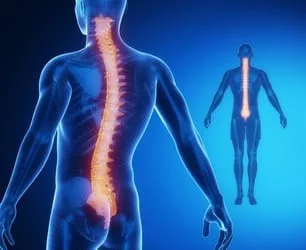Spinal Decompression Treatment
The DRS (Decompression Reduction Stabilization) System was developed through years of clinical research and is the result of the combined efforts of Neurosurgeons, Orthopedic surgeons and biomedical engineers. Following the successful treatment of more than 8,000 patients, FDA clearance was issued in April 1997, and the system became available for medical use in January of 1998.
Call (972) 792-0204 Today & Schedule Your Spinal Decompression Treatment
The DRS System for Disc Decompression is the most advanced technology available for non-surgical treatment of bulging or herniated discs, degenerative discs, posterior facet syndrome, sciatica, spinal stenosis, and many post surgical cases. Through clinical trials, the non surgical decompression of lumbar discs with the DRS System for disc decompression has proven to be 86% effective in the relief of pain and disability resulting from disc injury and degeneration, by facilitating the repairing of damaged discs and nerves.
The DRS System for spinal decompression treatment addresses the mechanical aspects of discogenic pain through non-surgical decompression of intervertebral discs, that is, unloading due to distraction and positioning. Conventional lumbar traction involves simple mechanical stretch, which, when applied continuously or intermittently causes reflexive spinal muscle contraction resulting increase in intradiscal pressure.
Contrary to conventional traction, the DRS System disc decompression treatments apply pressures on the disc in a proprietary, graduated manner which bypasses the inherent neurological mechanisms that lead to firing of stretch receptors in the paravertebral structures. This decreased resistance to the distractive forces allows a marked reduction in intradiscal pressures, which promotes healing of damaged discs. In recent clinical studies, this painless, non-invasive treatment has been shown to be 86% effective in relieving lower back pain and sciatica.
Frequently Asked Questions
How does the decompression differ from ordinary spinal traction?
Traction is helpful at treating some of the conditions resulting from herniation or degeneration. However, traction cannot address the source of the problem. Disc decompression creates a negative pressure or a vacuum inside the disc. This increase in negative pressure causes the flow of blood and nutrients back into the disc allowing the body's natural fibroblastic response to heal the injury and re-hydrate the disc. Traction and inversion tables, at best, can lower the intradiscal pressure from a +90 to a +30 mmHg. Disc decompression is clinically proven to reduce the intradiscal pressure to between a -100 to -200 mmHg. Traction triggers the body's normal response to stretching by creating painful muscle spasms that worsen the pain in affected area.
How does the DRS separate each vertebra and allow for disc decompression at a specific level?
Decompression is achieved by using a specific combination of lumbar positioning and varying the degree and intensity of force. The key to producing this decompression is the gentle pull that is created by a logarithmic curve. When distractive forces are generated on a logarithmic curve the typical proprioceptor response is avoided. Avoiding this response allows decompression to occur at the targeted area.
How long do treatments last?
Most patients require 16-20 treatments and a customized physical therapy program.
Are results permanent?
Typically additional spinal decompression treatments are not required after the completion of the treatment protocol. However, as with any treatment there are always severe cases that involve particular job/lifestyle activities that may require re-evaluations.
What conditions can and cannot be treated
by the DRS?
Treatable conditions
Low Back ›
Sciatica Chronic Pain ›
Herniated Disc
Chronic Pain
Mild to Moderate Spinal Canal
Disc Degeneration
Disc Extrusions
Bulging Discs
Post surgical patients with failed back syndrome
Non Treatable conditions
1. Spinal tumors
2. Vertebral Fractures
3. Spondyololisthesis
4. Osteoporosis
5. Severe medical conditions
Clinical Research Studies
Pain Management: A practical Guide for Clinicians
IMAGE & Cost Effective guide for Lumbro Sacral Pain
Journal of Neuro-Imaging
George Washington University

